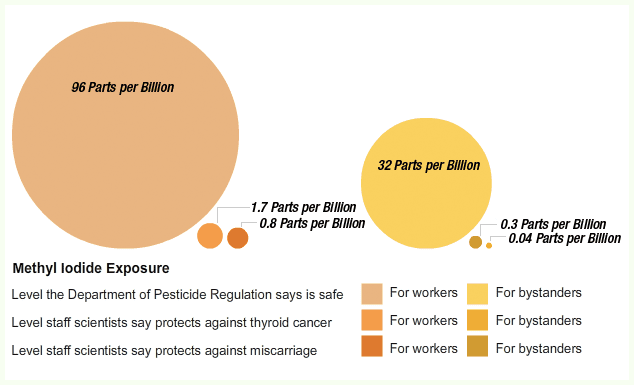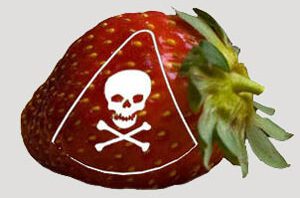"Puzzled by some of the numbers…not scientifically credible…apparent 'mix and match' approach." These are some of the phrases found in a pair of memos authored by California officials looking into the state's controversial decision to approve methyl iodide.
The documents were unearthed by attorneys at Earthjustice earlier this week, working on behalf of PAN and the United Farm Workers, among others. They substantiate what independent scientists had been saying all along: state officials caved to pressure from pesticide manufacturer Arysta LifeScience and approved the use of cancer-causing methyl iodide in California.
According to PAN consulting scientist, Susan Kegley, PhD, “These smoking gun memos show that state officials cherry-picked calculations to support their preferred outcome of approving methyl iodide instead of letting science guide their decision-making.”

What the science says vs. what DPR decided
The release of the documents came as a hard-fought ruling between the Department of Pesticide Regulation — attempting to prevent access to the information — and attorneys at Earthjustice acting on behalf of environmental, health and worker organizations. The judge stated that “… the public’s interest in disclosure under these circumstances clearly outweighs the interest in keeping them confidential. The documents are important to an understanding of the decision to permit the use of the pesticide at issue in this litigation.”
This discovery of corporate interference in the scientific process strengthens the concerns voiced by leading scientists, including six Nobel Laureates. Scientists commissioned by the state to review the chemical, including the committee's Chair, Dr. John Froines, have consistently stated that science was "subverted" and that "there is no safe level for methyl iodide."
What's in the "smoking gun" memos?
The documents show that DPR management selected the desired buffer zones first and then mixed and matched methods of risk assessment to obtain an “acceptable” level of exposure. Current approved buffer zones are 200 feet for a broadcast fumigation of a 10-acre field. Had the scientists’ risk assessment methods been followed, this application would have required a buffer zone of at least a mile.
One memo authored by state toxicologists suggests that top officials misused data to justify their conclusions, stating that numbers “appear to have been extracted from different MeI [methyl iodide] risk assessment methodologies that are not interchangeable … It is not scientifically credible to select a value or assumption from one and combine it with a value or assumption from another.”
One of the lead authors, Lori Lim, has since transferred to another state agency citing concerns around how her superiors ignored cancer risks in approving methyl iodide.
In another anonymous memo state officials make the case for more limited protections to meet the needs of the pesiticide manufacturer. In considering various scenarios for buffer zones that would better protect workers and bystanders, officials characterize large buffer zones as “excessive and difficult to enforce unless very limited use was allowed. [Arysta] may find these buffer zones unacceptable due to its economic viability.”
Nowhere in the memos were equivalent concerns about what levels of increased cancer risk rural communities might find "unacceptable."







